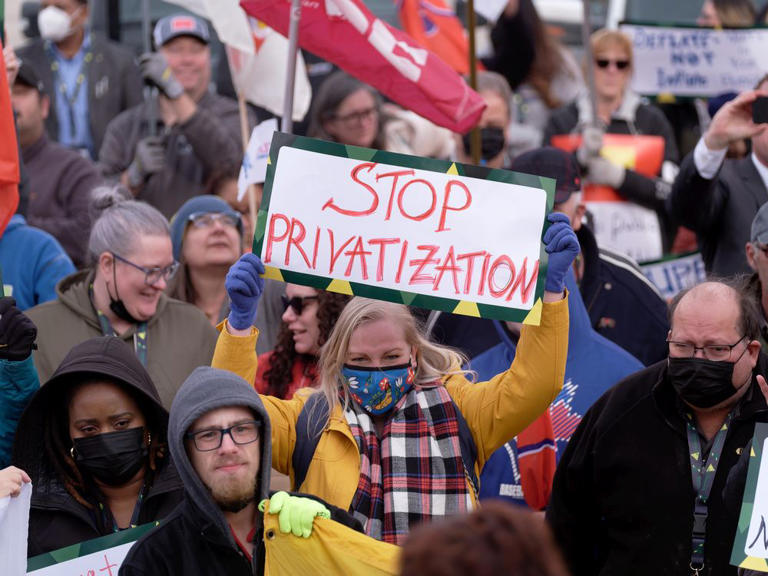Key labour laws will be assigned to Smith's new Alberta jobs ministry: premier's office
Lisa Johnson - Yesterday- Edmonton Journal
Alberta’s UCP government is clarifying which new ministry will be in charge of labour laws in the province after a cabinet order failed to assign responsibility.

Alberta Premier Danielle Smith speaks to the media outside Government House following the swearing-in of her new cabinet ministers, in Edmonton Monday Oct. 24, 2022.
The order in council (OIC), approved Monday, set out which ministries oversee which legislation, but Alberta’s Opposition NDP and unions were quick to sound the alarm that no ministry appeared to be responsible for either the Occupational Health and Safety Act (OHSA) or the Labour Relations Code.
The OHSA sets out work safety rules, including the investigation of workplace deaths, while the labour code outlines rules for workers and employers around union certification and collective bargaining.
While the OIC did not list the Occupational Health and Safety Act, “this omission was inadvertent,” Becca Polak, Premier Danielle Smith’s press secretary, said Wednesday.
Danielle Smith's adjustments to Alberta public service fall short of shakeup
Jobs, Economy and Northern Development Minister Brian Jean will take responsibility for both the OHSA and the Labour Relations Code, Polak confirmed.
That confirmation arrived after Smith said Monday the labour portfolio, which used to fall under labour and immigration, would be handled by two new ministries, with Kaycee Madu being sworn in as skilled trades and professions minister, and Jean as the minister for jobs, economy and northern development.
“Jobs is another word for labour, and that’s where the labour components of legislation are going to reside with (occupational health and safety) and employment standards,” said Smith.
Oversight ‘frustrating and disheartening’ for NDP
NDP labour critic Christina Gray said earlier Wednesday even though it appeared to be an oversight, it was frustrating and disheartening to see the government fail to assign such major responsibilities.
“It’s really important that the government in charge of the province of Alberta has eyes on all of its responsibilities, not its personal sovereignty priorities,” said Gray, referring to legislation Smith has promised in order for the province to refuse to enforce federal policies and laws.
Gray also disagreed with Smith’s characterization of the labour file, saying Smith appears to be focusing on jobs as an economic measure, rather than on workers.
“Jobs does not speak to the care of the working people of Alberta and the rights that they should have protected,” said Gray.
The clarification from the premier’s office came after United Nurses of Alberta director of labour relations David Harrigan had flagged the omission in the cabinet order on social media Tuesday , and on Wednesday, Gil McGowan, Alberta Federation of Labour president, questioned whether it was an administrative oversight, or an attempt to undermine unions and workplace health and safety.
lijohnson@postmedia.com













.png)







